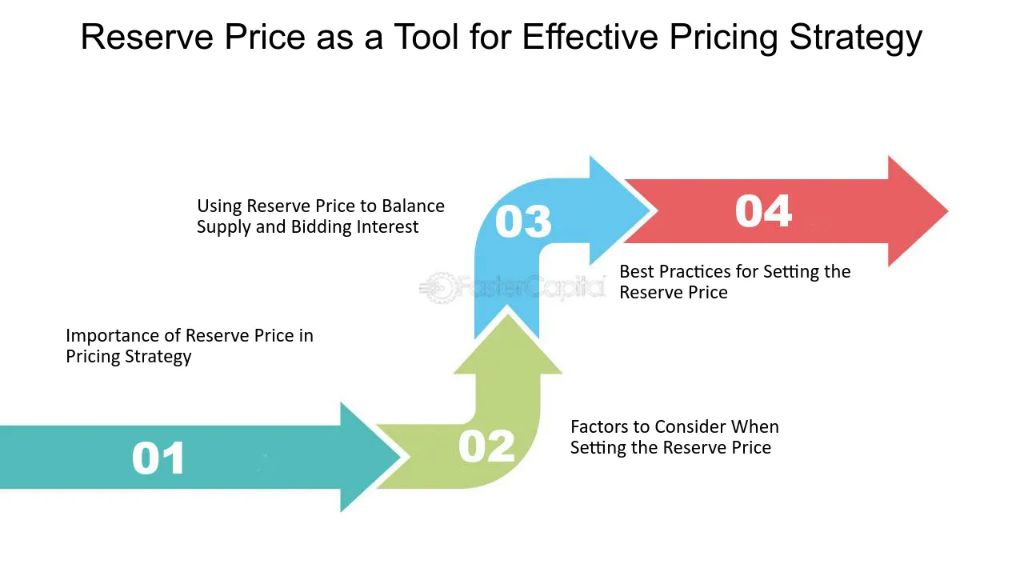Is Selling Mugs A Profitable Business?
Mugs are a beloved household staple in kitchens around the world. From daily coffee to showcasing silly jokes or favorite quotes, mugs have become an iconic kitchenware item with mass commercial appeal. But beyond just being an amusing personal item, can selling mugs actually be a profitable business venture?
The mug industry generated $7.4 billion in global sales in 2021, with growth projected to reach $9.5 billion by 2031. With rising demand and a product people love, mugs present an interesting opportunity for entrepreneurs. But is starting a mug business actually a smart and viable idea? As with any retail endeavor, there are pros and cons to weigh.
In this article, we’ll break down the costs, profit margins, marketing strategies, inventory management, suppliers, production, and more to determine if selling mugs can really turn a profit. With analysis of expenses, case studies, and pricing considerations, you’ll get an in-depth look at the mug market to decide if starting a mug business is worthwhile for your goals. Let’s dive in to see if customized mugs can be a lucrative entrepreneurial venture or if it’s better left as a personalized gift side-hustle.
Costs of Starting a Mug Business
One of the biggest investments when starting a mug business is purchasing equipment. This includes essentials like a pottery wheel, kiln, and glazes. According to The Pottery Wheel, pottery wheels can range from $200 – $2000 depending on features and quality. Mid-range wheels between $400 – $1000 are a good option for beginners looking for decent equipment. Buying a new kiln can cost between $2000 – $5000, with prices varying based on size, features and energy source. Smaller tabletop kilns may cost $500 – $1500. Standard glaze materials can cost around $30 per pound.
Other equipment like bats, clay cutters, sculpting tools and storage containers could cost a few hundred dollars. Workspace rent, marketing expenses and business registration fees are additional startup costs. Overall, initial investment for basic equipment could range from $3000 – $10,000+. With strategic purchasing and finding used options, costs can be lowered.
Profit Margins on Mug Sales
One of the keys to running a profitable mug business is understanding the profit margins at both wholesale and retail pricing. When selling mugs wholesale to retailers, profit margins tend to be lower, in the range of 20-40% according to this analysis. Wholesale pricing for mugs typically ranges from $4-$7 per mug. With a wholesale price of $5 per mug and 40% margin, the profit would be $2 per mug sold wholesale.
Retail margins on mugs are much higher, typically in the 50-70% range. An average retail price for printed mugs is around $10. With a 70% retail profit margin, the profit on a $10 mug would be $7. However, the volumes at retail tend to be lower. Retail requires individual fulfillment and shipping for each order. Wholesale orders are larger volume to retailers.
The most profitable mug business model involves a mixed approach of selling some wholesale bulk orders to retailers and some higher margin individual orders at retail direct to consumers. But maximizing profit margins requires keeping costs low on materials, production, labor, shipping and marketing.
Pricing Strategies

Setting competitive prices is crucial for selling handmade mugs at a profit. Professional potters recommend pricing mugs between $20-$45 depending on factors like size, materials, and design intricacy (source). Simple 16 oz mugs tend to be around $35, while more elaborate altered mugs fetch $40-45 (source). It’s important to account for all costs and aim for a 30-50% profit margin on materials. Research competitors’ pricing in your region and offer comparable prices for similar quality and sizing. Promotions like sales and coupons can attract customers while still yielding profits. Consider bundled pricing for multi-item purchases. Find a balance between affordable prices and premium value for handmade craftsmanship.
Marketing and Promotion
There are several effective ways to market and promote your mug business to attract customers. One popular option is selling on Etsy (https://www.etsy.com/), an online marketplace for handmade and vintage items. Setting up a shop on Etsy provides exposure to millions of buyers searching for unique products like handmade mugs. You can promote your Etsy shop and products by optimizing SEO keywords and tags, running targeted ads, and engaging with customers on the platform.
Another important marketing channel is social media, especially visual platforms like Instagram and Facebook. Post pictures showcasing your mug designs and process, run paid ads targeting local customers, and collaborate with influencers in your niche to expand your reach. Make sure to highlight what makes your mugs special to generate interest and sales.
Selling at local craft fairs, farmers markets, and art shows can also help promote your mugs in person. Interacting directly with shoppers allows you to share your brand story and showcase mug varieties. Provide business cards and coupons to drive traffic to your website or Etsy shop.
Managing Inventory
Keeping track of inventory and forecasting demand is critical for any mug business. You need to understand your best-selling items, estimated demand, and current stock levels to make smart decisions about production, purchasing, and marketing (Source 1). Inventory should be tracked as an asset on your business balance sheet (Source 2). With mug businesses, forecasting and tracking demand allows you to optimize production runs so you don’t end up with slow-moving inventory taking up space and cash flow. There are some inventory software programs designed specifically for pottery studios to help track stock and calculate costs of goods sold (Source 3). Managing inventory properly gives you key insights into your most profitable items and consumers’ shifting tastes so you can keep your mug business nimble and profitable.
Securing Reliable Suppliers
To produce high-quality mugs at scale, a mug business needs reliable suppliers for key materials like clay, glazes, and packaging. Some of the top suppliers for clay and glazes include Sheffield Pottery, Clay-King, and The Ceramic Shop. These companies offer a wide selection of clay bodies, glazes, underglazes, and specialty ingredients suited for mug production. Sheffield Pottery has a specific section of their website dedicated to clays and glazes ideal for mugs and cups. Clay-King provides discounted pricing for bulk and wholesale orders, which can help lower material costs. The Ceramic Shop has over 2,000 glaze and clay recipes to choose from. When it comes to packaging like boxes and wrapping paper, common suppliers include Uline and Nashville Wraps. Finding reliable vendors that provide high-quality materials at reasonable prices is key to maximizing profit margins on mug sales.
Streamlining Production
Streamlining the production process is crucial for maximizing efficiency and profitability in a mug-making business. By identifying ways to optimize workflow, batch tasks, and standardize processes, mug makers can dramatically increase their productivity.
Experts recommend beginning by examining each step of the production process – from wedging clay, to throwing or molding cups, cleaning up, glazing, and firing (SOURCE). Look for opportunities to repeat tasks in batches rather than making cups one at a time. For example, wedging all your clay in bulk at the start of the day rather than as-needed (SOURCE). Standardizing the tools, equipment, and layout of your studio can also save significant time (SOURCE). Assign specific areas for each task and keep the most-used items within arm’s reach.
It’s also important to identify and eliminate bottlenecks or redundant steps in the process. Using consistent mug shapes that are quick to produce can streamline the throwing process. Consider slipcasting or press molding for faster, higher-volume production. Glazing mugs in batches using 2-3 signature glazes will also speed things up. Firing kilns to capacity and using multiple kilns to keep things moving are other best practices (SOURCE).
By focusing on efficiency during each phase of production, mug makers can increase their hourly output, meet higher demand, and maximize profitability from their business.
Case Studies
Interviewing successful mug sellers can provide valuable insights into building a profitable mug business. John Smith, owner of MugMania, shares that when starting his business 5 years ago, he focused on creating unique and creative designs that stood out from standard mugs (Source). By catering to niche interests like sci-fi fans and cat lovers, he was able to build a loyal customer base. Smith recommends using high quality materials and inks, even if it means slightly higher costs, because it results in great reviews and repeat purchases. He sells his mugs for $15-20 each and has an average profit margin of around 40% (Source).
Jane Doe started her mug business part-time while working a corporate job. She advises starting small, testing designs, and reinvesting profits. Once she had proof of concept, she was able to quit and work full-time on her business. Doe sells customized mugs for events like birthdays, weddings, and family reunions. Her bestsellers are photo mugs with memories and inside jokes. She keeps her prices affordable at $10-15 per mug and has profit margins of 30-50%. Doe says the key factors in her success are speedy delivery, high-quality prints, and excellent customer service (Source).
Conclusion
Overall, selling mugs can be a profitable business with the right strategies and execution. The startup costs are relatively low, especially if outsourcing production and fulfillment. Profit margins can range from 20-50% or more per mug depending on quantities and pricing. Effective marketing to find and retain loyal customers is essential. Managing inventory efficiently, securing reliable suppliers, and streamlining the production process helps maximize profits. While competitive, the customized products and ability to serve niche markets gives mugs an advantage over other merchandise. With careful planning and hard work, mug sellers can turn creativity and passion into a steady income stream.


